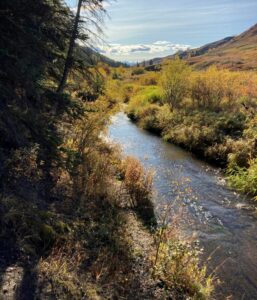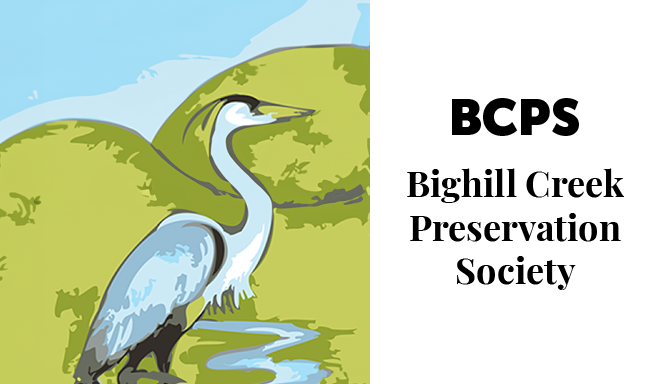Join Tako Koning for an informative few hours exploring the Bighill Creek watershed and the area north of Cochrane. Fieldtrip Leader, Tako Koning, P.Geol., will provide you with important information and perspectives on the Bighill Creek Environment and threats from encroaching industrial development. This field trip is basically a road trip with no physical challenges. Everyone is welcome!
September 14, 2024, 9:00 AM – 3:00 PM
Meeting Place: Cochrane Ranche Parking Lot, Highway 1A, Cochrane
This is a field trip visiting the beautiful area within and just to the north of Cochrane. The area is located within the Bighill Creek watershed which covers an area of approximately 175 square kilometers.
Bighill Creek Valley
The field trip will begin by viewing the Bighill Creek valley in Cochrane. This valley originated as a major glacial meltwater channel. The steep sides of the valley expose the underlying 60-million-year-old Paskapoo sandstones which form cliffs and were used as buffalo jumps by the First Nations inhabitants.
The valley is also a home for deer, moose, elk, cayotes, cougars and even the occasional bear and wolf. It is also home to a variety of birds, ranging from waterfowl to raptors. The valley is within the rapidly expanding Town of Cochrane (population 40,000 people). A representative from the Bighill Creek Preservation Society will describe their efforts for protecting this unique and environmentally sensitive valley.
Encroaching Gravel Mining
Various organizations including the Bighill Creek Preservation Society and the Alberta Wilderness Association are concerned about the environmental impact of a number of gravel mines encroaching near to Big Hill Springs Provincial Park. We will view two active producing gravel mines and also view two soon-to-be-developed very large gravels mines which received government approval in the past year. The latter two mines could negatively impact on the subsurface hydrogeology and water migration paths which constitute the springs in the park. These springs are both mineral and thermal springs which flow at a constant +6 degrees C even in the middle of winter when temperatures can be as low as -40C. Indeed, the Big Hill springs were ranked by Tera Consultants for Parks Canada as being the fourth top mineral spring in Canada. We are not opposed to the mining of gravel and recognize that gravel is critical for our economy. However, these newer gravel mines are located in the worst of all places relative to Big Hill Springs Provincial Park.
Oil Production Activity
Rapidly expanding oil production activity is happening in the Cochrane North area. We will also visit three oil production sites where prolific production of oil is the result of hydraulic fracturing. The technology of this production will be explained. In terms of the impact on the environment, production of oil using hydraulic fracturing allows for up to eight horizontal wells to be drilled from a single production “pad” which is much preferrable to earlier times when typically one oil well was drilled vertically on locations every 80 or 160 acres. The bottom line is that this new technology has much less of an environmental footprint than using the technology of twenty years ago. Nevertheless, hydraulic fracturing for oil and gas production is controversial since very large volumes of water are used and fracking has caused localized earthquakes albeit infrequently.
